Could willow hold the key to tackling fungal disease?
19th February 2024
A mirror orchard has been planted in west Wales to explore the benefits of using willow mulch to tackle fungal disease in pears. If successful, it could open up a new market for apple and pear growers, as well as areas where the fruits can be successfully grown. Sarah Kidby spoke to Joey Hughes, founder of Orchard Daughters, to find out more.
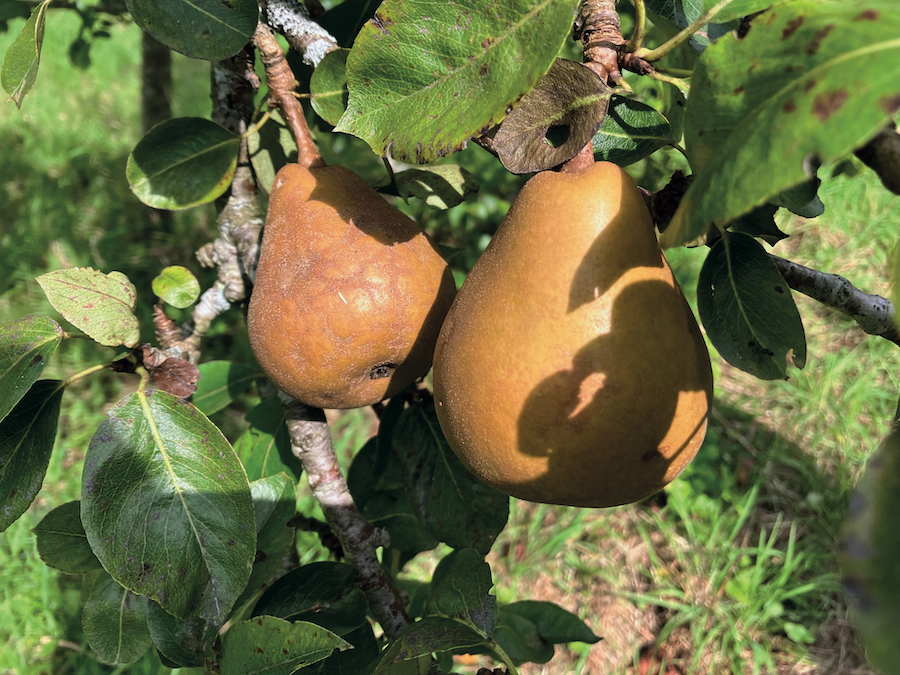
It’s long been accepted that salicylic acid, the main metabolite of aspirin, has a wide range of applications. But research has shown that it also plays a role in fruit tree health, which prompted Joey Hughes of the Orchard Daughters consultancy, to plant a mirror orchard of pear trees, using ramial chipped wood (RCW) as a mulch for 50% of the trees, and willow RCW on the remainder.
The ‘wood wide web’
Research over the past decade has shown that ramial chipped wood (RCW) – previously a waste product, also known as brushwood – is very high in the phytonutrient breakdown needed for feeding the mycorrhiza. This is particularly interesting for top fruit growers as the sector tries to move away from sprays and towards working in tandem with nature, Joey explained. One of the ways this is done is by feeding the mycorrhiza, which forms a symbiotic relationship with the trees’ roots.
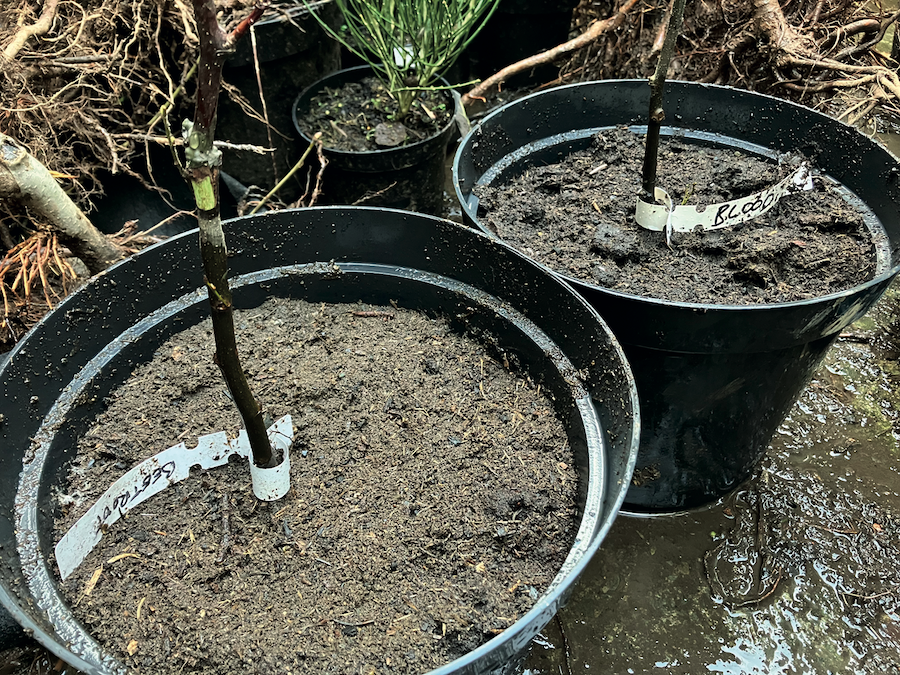
“It’s a fungal network amusingly referred to as the ‘wood wide web’ because a lot of research has gone into how trees ‘communicate’. Clearly there’s a super highway of communications and nutrient exchange,” he added.
Joey describes it as the tree roots putting on a set of gloves with incredibly long fingers which stretch out across the orchard floor, linking the trees together. “It means if you’ve got nitrogen-fixing trees or crops you’re growing to feed your trees, or if you’ve got bioaccumulators like Comfrey that penetrate deep into the subsoil to bring nutrients up, the mycorrhiza knows where all these things are. […] There’s evidence of it dragging nutrients from right across fields and further.”
However, if you want to produce RCW, you need to do so quickly for commercial reasons. A number of trees have been trialled and willow is known to be a good option as it grows so quickly you can be cutting it every year or every other year.
In trials looking at top fruit, it was discovered that the salicylic acid in willow could also be linked with reduced fungal disease – however, no one had previously trialled it alongside RCW to compare the effects.
Which willow?
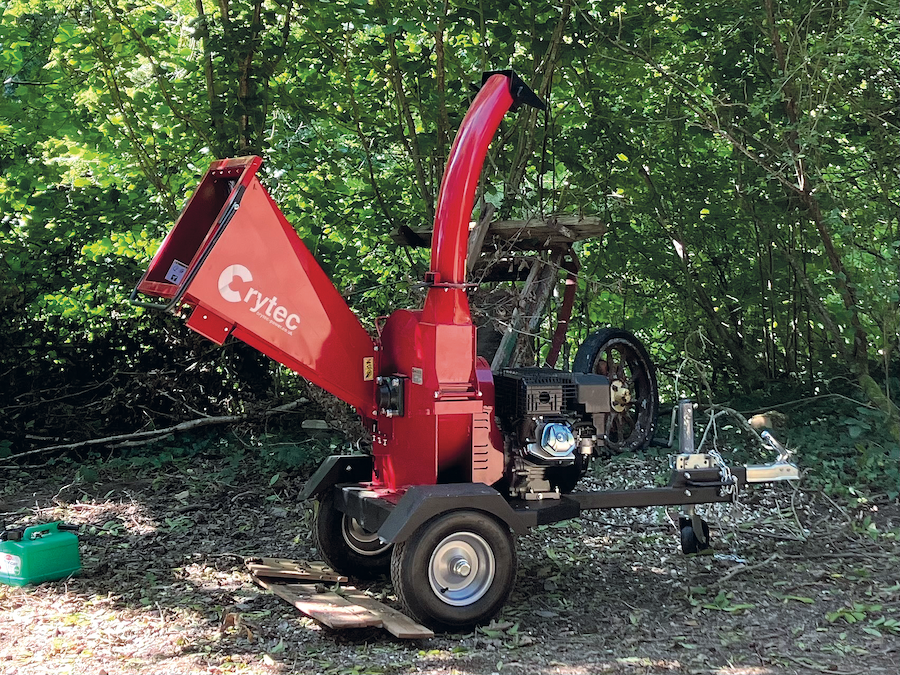
Orchard Daughters had plans to plant a new pear orchard and saw it as an opportunity to do something collaborative, whilst exploring the benefits of willow mulch. A local farmer is donating all the willow for the first two years of the trial, until the orchard can establish its own.
Research has shown that the level of salicylic acid varies greatly, but one variety in particular – daphnoides, or European violet willow – is 16 times higher than other varieties. This will make up the majority of the orchard’s willow – however, as it doesn’t grow as quickly as traditional varieties, they will also plant a section of viminalis. Joey’s philosophy is that it’s always better to grow things with more than one purpose – so viminalis can also be used for basketry, while daphnoides has beautiful purple-violet stems with pearly white catkins for cut flowers – so both can be sold if there’s a surplus.
An added benefit is that willow is very early flowering and provides a food source for pollinators. It’s important to provide pollinators and beneficial predators with a source of food and water all year round. “Things you might forget about such as planting hedges with plants that will provide a food source outside the blossom season e.g., ivy and willow early in the season, and heathers etc. late in the season,” Joey said. “Always put in pollinator strips to feed them and encourage some sort of pond as they need to drink, which people often forget.”
A more lucrative product
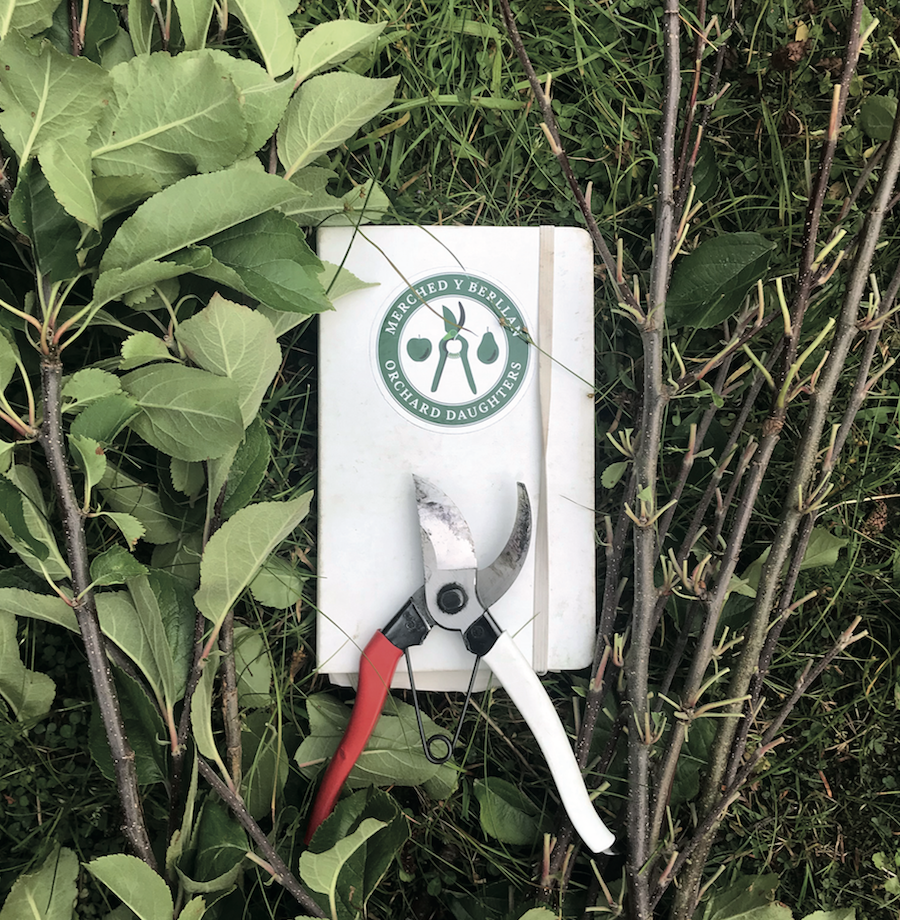
Apples and pears are closely aligned and suffer very similar diseases. Explaining the decision to grow pears for the trial, Joey said: “It didn’t make any sense for us to grow apples – everyone’s doing that, so we thought why not grow the more difficult thing.”
They have planted 15 conventional pear varieties, five perry varieties and two others – beetroot and blood pears, which are both red fleshed. There are two of each variety in mirror orchards spanning 0.5ha on Orchard Daughters’ own clay-based land – in collaboration with local landowners and farmers. A few additional Welsh pears such as Penrhyn, Snowdon Queen, and another perry may also be planted.
Ten trees (the perry varieties) were planted in March/April 2023, and the remainder in November.
The rootstock being used – Pyrodwarf – is related to a variety that offers some resistance to fireblight, which is on the increase in the UK.
“Where you might have [traditionally] grown pears further to the east, we’re probably going to see more fireblight unfortunately. Because of climate change, we’re getting very dry late springs and early summers and I think that’s why we’re seeing a disease that we didn’t really associate with the UK. With climate change you have to think about things that will grow well in 10, 20 or 30 years, he added.
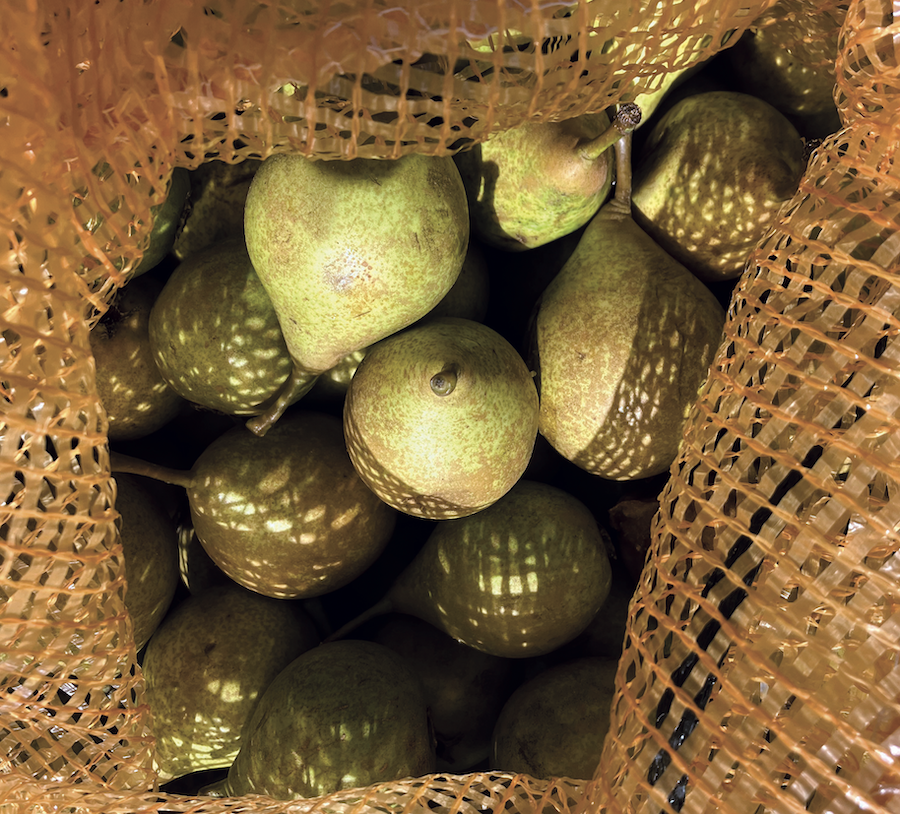
Joey also plans to sell fresh fruit into a local box scheme as it can be sold at more of a premium – especially where they are based in west Wales, as the wetter weather means fewer people are growing pears.
The market for fresh fruit is huge, and much more lucrative than making fresh juice or cider and perry, but people don’t want to buy apples and pears with imperfections such as surface scab, Joey pointed out. In 2020 the UK imported 46% of its fruits and vegetables, but when you look at the figure for fruit alone, it was 84%. Whilst there’s money in fresh juice, cider and perry, Joey said: “It’s much better commercially if you can augment that, even with a small portion of crop that is shop-bought quality, it will massively increase your returns and allow you to invest in other things, such as better juicing or grading equipment.
By late next summer, there should start to be evidence of whether tree condition and vigour is improved on the orchard using willow mulch on the earlier planted trees. The impacts will then be monitored over the next three years. The perry trees will be allowed to crop as they went in earlier but the fruit will be removed from the other 15 commercial varieties for the first year, so there won’t be any results on the impacts on surface scab just yet. However, they will look at leaf condition and resistance to other pests and disease. Whilst Joey is confident improvements will be seen in the trees with willow mulch, the trial will demonstrate how much of a difference it makes. If successful, the findings will translate to apples which suffer similar diseases.
Full list of varieties being grown in the trial:
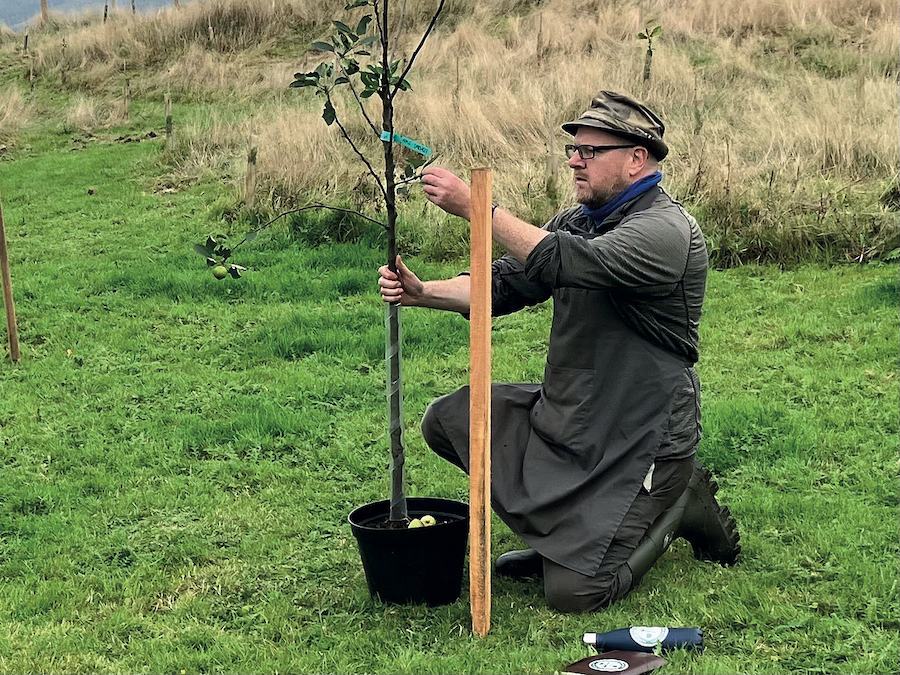
- Black Worcester
- Catillac
- Concorde
- Conference
- Doyenne du Comine
- Fondante d’Automne
- Humbug (stripy)
- Invincible
- Jargonelle
- Josephine de Malines
- Merton Pride
- Moonglow
- Obelisk
- Packham’s Triumph
- Pitmaston Duchess
- Chapman’s Orange
- Coppy
- Little Cross Huff Cap
- Welsh Gin
- Welsh Potato
- Beetroot and Blood
Meet the grower

Joey Hughes started fruit tree specialist Orchard Daughters four years ago, but has been developing his orchard skills over the past 30 years. He has a masters from the Scottish Agricultural College in Edinburgh and has been a director of Wales Heritage Orchards, and on the board of Llais y Goedwig, the voice of community woodlands.
He was also a senior parliamentary advisor for the House of Commons, head of policy at the Organic Research Centre and head of capacity building at AgriTechTalk International. Meanwhile, he’s had two main roles with the Welsh Government: head of plant health and biotechnology and head of food policy and strategy – alongside running his own orchards.
Orchard Daughters (Merched y Berllan in Welsh) is predominantly a consultancy but also grows apples and runs a number of community projects, such as courses for people on low incomes and work for charities and local authorities, including planting orchards for care homes and teaching people how to look after community orchards.
The company also produces a few hundred fruit trees to sell each year, and tends to grow them until they’re a little older so they can be incorporated straight into agroforestry schemes. For further information follow @merchedyberllan on Instagram or Facebook.
